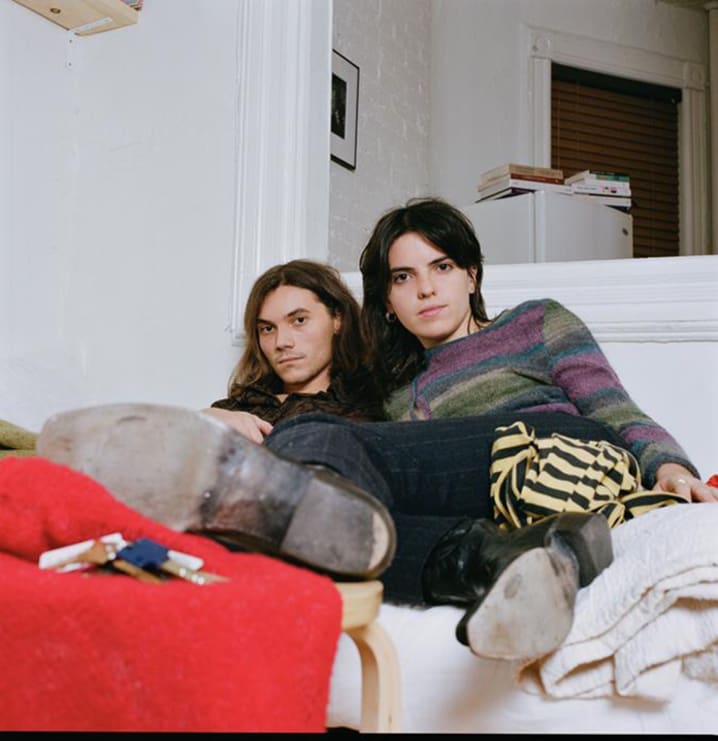
Purr Shares Mischievous New Video For "Avenue Bliss"
New York City’s Purr has released their latest single “Avenue Bliss” today, from their upcoming debut album Like New.
““Avenue Bliss” was the last song we wrote on the album,” said Purr singer and songwriter Eliza Callahan. “It’s about power and presence and having no words left— and then having that dust clear. The beginning of the song is like an ending and the end, hopefully, like a new beginning… we tried to mirror this in the arrangement too. You’ll see. It’s an adventure track. Self-adventure, the worst and best kind.”
Directed by Guy Kozak, watch the lighthearted yet mischievous new video for “Avenue Bliss” HERE.
[youtube id=9eT4yadtU24]
Guy Kozak is an NYC-based filmmaker. In addition to directing music videos and experimental shorts, Guy has worked extensively in the art departments of a number of feature films including Wes Anderson’s Moonrise Kingdom, Barry Jenkins’ If Beale Street Could Talk, Noah Baumbach’s The Meyerowitz Stories: New and Selected, and Sofia Coppola's forthcoming project.
"With this music video, I wanted to make something that was sinister and playful at the same time, drawing from the way the song evolves from a wistful ballad into something more like an upbeat disco track,” Kozak said. “In developing the concept, I looked at a lot of Jim Henson and Norman McLaren shorts as well as early Disney cartoons for inspiration, ending up somewhere along the lines of Phenomena meets Snow White meets... Downton Abbey. It was a bit of an odd pitch, but Eliza and Jack got it straight away and fit right in."
Produced by Jonathan Rado (Father John Misty, Weyes Blood, Whitney), Like New is, at its core, an album about weathering transitions, the wake and the calm, the strange pains and pleasures that rise up in between. It's a compelling testimony from a pair of young (and wise) songwriters about shedding old patterns and old relationships and confronting the space for what comes next. The sounds nod, at times, to a place in the past (your favorite 70's AM), but they don't dwell there. The effects of Americana and Psychedelia gives way to something at once contemporary and classic— with Staffen and Callahan's harmonies— which can eerily forge what sounds like one voice—humming at the center.